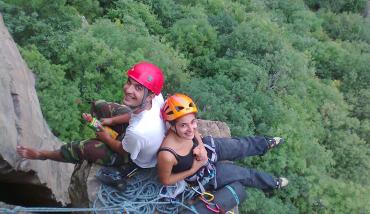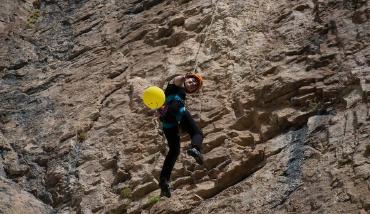Trekking to the medieval fortress Smbataberd and the Church of Tsaghats Kar
Price From $36 for a group of 4 or more people
We will meet at our scheduled meeting point in the morning and head to the medieval church of Khor Virap, the closest point to the majestic Mount Ararat. And from there we will continue to the starting point. Today we see the ruins of the Smbataberd fortress, which dates to the 5th century A.D. and is located on a mountain peak to the south-east from Yeghegis village. From three sides the fortress is protected by mountain steep slopes, which are additionally strengthened by high and wide pyramidal walls. It is possible to enter the fortress only from its northern side. During the time of its existance, they managed to capture it only once, and then, thanks to the tricks of warriors: mules were given salt and allowed to graze in the vicinity of the fortress. Thirsty animals, looking for water and smelling it, were able to recognize where the ceramic pipes through which water flowed into the fortress. By blocking the water, the enemies forced the defenders of the fortress to surrender.
We will continue our hike to the monastery complex of Tsakhats Kar. The complex consists of three buildings - the Church of the Holy Sign, the Church of St. Karapet and the Church of the Holy Virgin. The bas-reliefs of St. Karapet church reflect the coats of arms of the princely families of Syunik (IX-XI centuries).
At the end of our hike we will visit the Zorats Tachar church, built in 1303 by the Orbelian princes, and the ancient Jewish cemetery near the village of Yeghegis. The Jewish cemetery is owned by the Jewish community that lived in Yeghegis from 12-14th centuries. Contains tombs from 1266-1346. The grave markings on the Matzevahs (a Jewish memorial in the form of a standing stone) contain biblical works on religious themes and expressions from the Talmud. The graves also bear Jewish names of Iranian origin. The oldest, or one of the oldest preserved Jewish cemeteries in the world.
Hike will take 3-4 hours, with a set height of 526 m and a length of 12 km.Level of difficulty - average.
On the way back we will visit Noravank Monastery, a monastery complex built in the XIII-XIV centuries, on the narrow sloping gorge of the tributary of the Arpa River. The gorge is also famous for its steep red rocks.
Transportation service
Guide services
Excursion to Noravank and Khor Virap Monasteries
Entrance tickets
Our guide has a first aid kit
Spring water
24 hours customer service by phone
Insurance
Meal
Personal equipment
Personal medicines











